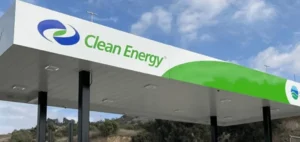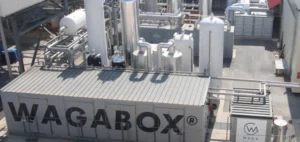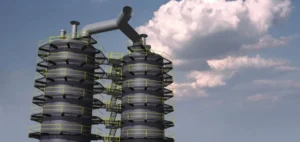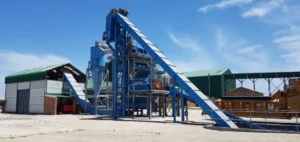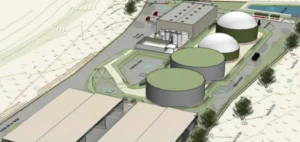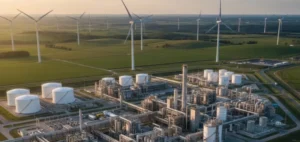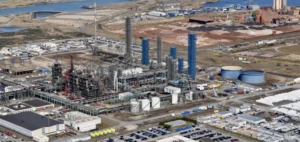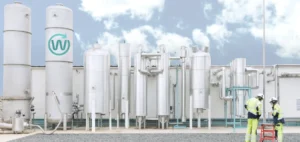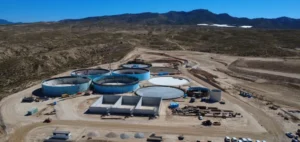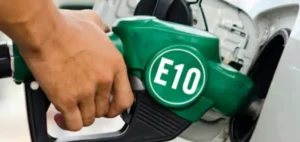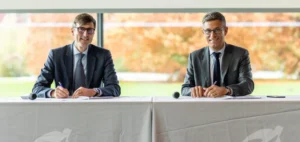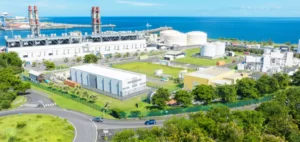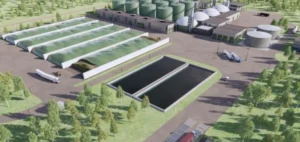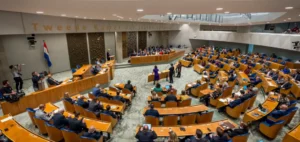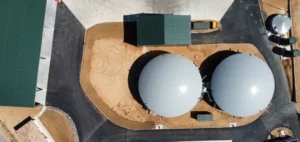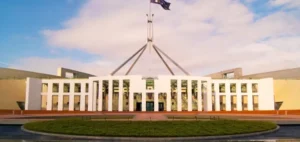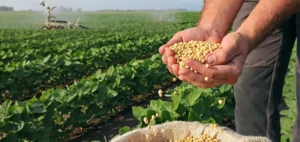On Thursday, March 16, the Mélusine gas backbone was inaugurated in Sanxay (86), a project co-financed by the company Énergie Fermière, the urban community of Grand Poitiers and the Syndicat Energies Vienne. The project management has been entrusted to the Soregies Group, which will operate this new network infrastructure. The 34 km underground gas pipeline will transport biomethane from the methanization unit operated by Énergie Fermière to homes in the Grand Poitiers area. This new production facility will cover the needs of local consumers, especially in the summer.
The Mélusine gas ridge in Sanxay, a support to the agroecological system
Frédéric Bouvier, general manager of the Soregies group, and Jérôme Clochard have been working on this project for 5 years to valorize livestock effluents and incorporate intercultures without penalizing the following crops. Three young farmers from the commune also participated in this project. Methanization will allow farmers to produce biogas and digestate, a renewable fertilizer, while limiting the use of chemical fertilizers. This methanization unit will allow to consolidate the profitability of the farms while developing an agroecological system.
The call of the energy transition is at the origin of the Mélusine gas ridge in Sanxay
The 1,550 households concerned will be supplied with this green gas as of March 2023, with no change in their supply offer. This initiative by Soregies is a concrete response to the gradual replacement of fossil natural gas and is part of the ongoing energy transition. Frédéric Bouvier, CEO of the Soregies Group, welcomed this project, which illustrates the future model that the group imagined. He added that the production of renewable energy in short circuit in collaboration with communities and territories was the way forward.
First inter-operator loop in the sector
The Mélusine gas backbone project is part of the territorial objectives for the development of renewable gas and the national policy for the promotion of biomethane. It is also the subject of a national innovation in the energy world: the realization of an inter-operator loop between the gas networks of Soregies and GRDF.
The Sanxay methanization unit now injects its biogas production into the Mélusine gas backbone. The 34 km underground network connects this new biomethane production unit to the existing gas network of the Soregies Group. The 12 GWh of green gas produced will be injected into the Group’s network each year. A production that already meets the expectations of the Pluriannual Energy Planning (PPE) at the local level. Indeed, the PPE provides that by 2028, 7% to 10% of gas consumption in France will be provided by renewable gas production. With this project, 9% of the gas volumes transported each year on the Soregies Group networks in the Vienne department are renewable.
The territorial director of GRDF Poitou-Charentes, Renaud Francomme, underlined that green gas already represents 10% of the gas consumed in Poitiers thanks to two methanization units present on the territory. With this interconnection between the Soregies and GRDF networks, it will be possible to produce even more green gas and promote renewable energies in the region.



